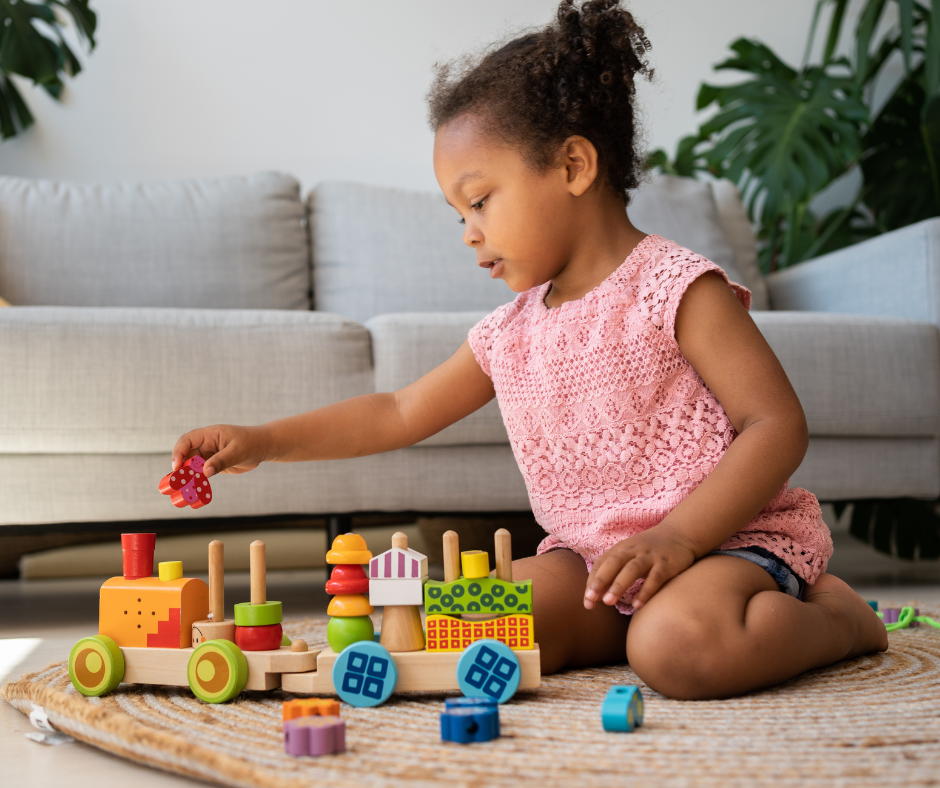
How a toddler can teach you mindfulness and how you create the environment where that can happen. Part 2
In the first installment I wrote about how babies (and pets) bring us into the present moment by living in the present moment themselves. I made this connection while spending time with my 20 month old Granddaughter. Just being around a baby or a pet pulls you into the present moment. I also wrote about how authentic babies are. Their crying and their emotions are very real. After all, it’s how they let you know they are hungry, tired, teething, getting sick or need a diaper change. Their crying feels authentic, not faked.
Adults on the other hand are not always so authentic. Sometimes they experience more pain in recounting the STORY of their pain than they do from experience of the actual pain itself. Where as babies can be easily distracted from their pain by creating a NEW present moment. In other words, babies are incapable of regulating their own emotions. So YOU have to do this for them.
As parents (and grandparents), we must complete our baby’s brain. Babies are born with a fully developed amygdala (the part of the brain that registers anxiety, stress and fear) but are also born with an undeveloped pre-frontal cortex (the part of the brain that doesn’t fully mature until age 25. The PFC regulates and controls the levels of anxiety, stress and fear that the amygdala generates whenever it detects a threat). So both as parents and grandparents we have to provide our babies’ with PFC assistance, and calm them when we see their amygdala is firing because they have absolutely no ability to do this by themselves.
When our Granddaughter came to visit last weekend, I witnessed this phenomenon first-hand. When her Mom dropped her off at our house, I started priming her with reminders of all the fun things we do when she visits: The games we like to play and the books we like to read and the kids songs we like to sing.
In the past, this “handoff” would sometimes be accompanied by some separation anxiety (that’s the fully formed amygdala, doing it’s job) and some tears. But I could see by the somewhat confused look on her face, that my efforts to comfort her- despite the fact that her Mom was leaving - were working.
You could tell she wanted to cry but she didn’t actually start. I was being her PFC for her. As we turned away from the driveway (no need to watch mom drive away) my wife put her down on the ground to climb the five “big steps” up to our back porch. I counted out loud: “one, two, three, four, five, as we always do, hoping that the familiar routine would soothe her (and calm her amygdala).
Apparently, it worked because at that moment she did something she’d NEVER done before (which her Mom and Dad later confirmed). She counted out loud right along with us. “One, two, three, four, five,” she said in the cutest little baby voice. It was one of those special moments that makes child-rearing so immensely satisfying.
Even though she can’t self-soothe, that doesn’t mean her baby brain isn’t working on overdrive. A baby’s brain is designed to take new information by forming new neurons and new neural connections faster and better than any adult brain. That being said, her brain can’t absorb anything, if she feels under threat. In other words, she can’t do that processing and growth, unless the adults in the room provide her with an environment where that can happen.
In the book Why Zebras Don’t Get Ulcers, by Stanford University Professor Dr. Robert Sapolsky, he writes about a particular Romanian Orphanage where the effects of stress were so bad that the children literally stopped growing. Researchers were able to pinpoint the source of this extreme stress to a particular caretaker who, prior to this job, had worked at another orphanage where the exact same problem occurred for the exact length of time she had worked there.
So if we want to help our babies to learn and grow and develop optimally, we have to create a calm environment for this to happen. And part of providing that kind of comfort requires us as parents and grandparents to tune into the present moment in order to hear what our babies are trying to tell us. Whether it’s: I’m hungry, I’m thirsty, I’m scared, I’m tired, I’m teething or my diaper needs changing. In other words, tuning into your baby’s needs is an exercise in tuning into the present moment. When we do this while providing comfort and calming, we are completing our baby’s brains.





James Porter
Author